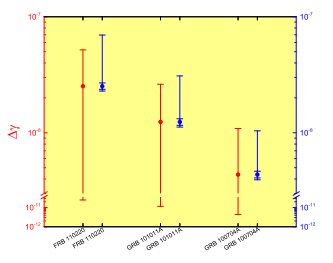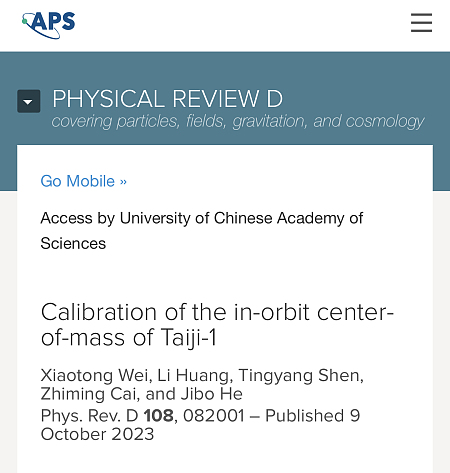Abstract
The accuracy of Einstein's equivalence principle (EEP) can be tested with the observed time delays between correlated particles or photons that are emitted from astronomical sources. Assuming as a lower limit that the time delays are caused mainly by the gravitational potential of the Milky Way, we prove that fast radio bursts (FRBs) of cosmological origin can be used to constrain the EEP with high accuracy. Taking FRB 110220 and two possible FRB/gamma-ray burst (GRB) association systems (FRB/GRB 101011A and FRB/GRB 100704A) as examples, we obtain a strict upper limit on the differences of the parametrized post-Newtonian parameter γ values as low as [γ(1.23 GHz)-γ(1.45 GHz)]<4.36×10(-9). This provides the most stringent limit up to date on the EEP through the relative differential variations of the γ parameter at radio energies, improving by 1 to 2 orders of magnitude the previous results at other energies based on supernova 1987A and GRBs.
 DOI: 10.1103/PhysRevLett.115.261101
DOI: 10.1103/PhysRevLett.115.261101
https://journals.aps.org/prl/abstract/10.1103/PhysRevLett.115.261101
The reviewers of "Physical Review Letters" gave high evaluation,the work presented in the manuscript represents a novel, innovative method to test Einstein's Equivalence principle, and provides the most stringent upper limits to date at radio energies.





